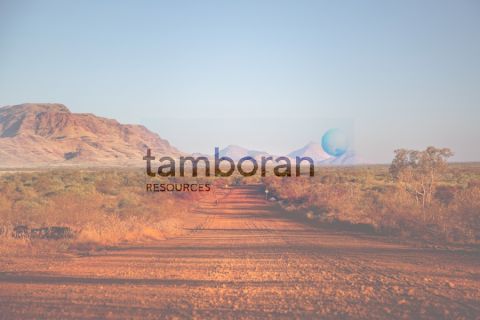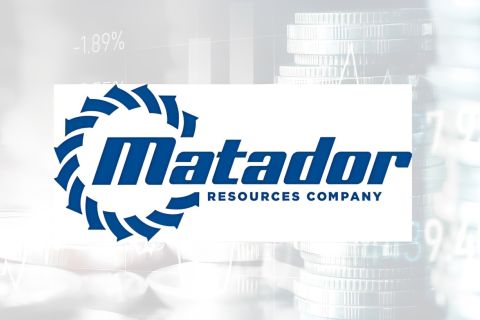In the deep waters of the Gulf of Mexico, the western Atwater fold belt area, which includes southeast Green Canyon, southwest Atwater Valley and northeast Walker Ridge, is generating some fresh excitement. In a recent report, Petrie Parkman & Co. analyst Steve Enger notes that the Tahiti find on Green Canyon 640 and the Cascade find on neighboring Walker Ridge 206 could be vanguard discoveries that open new trends. Tahiti, which contains 400- to 500 million barrels of recoverable reserves, was discovered in 2002 beneath a very thick section of salt. The discovery well was drilled to 28,411 feet in 4,040 feet of water. ChevronTexaco operates the project; its partners are EnCana Corp. and Enterprise Oil. "Tahiti is important because it is a large discovery under a very thick section of salt, which generally makes imaging of the reservoir at depth quite difficult. Importantly, the discovery establishes that a working hydrocarbon system exists northwest of previous discoveries," says Enger. Cascade, which was also discovered last year, was drilled in 8,180 feet of water to a total depth of 27,929 feet. Petrobras and Devon Energy are partners in the BHP-operated well. The owners say the wildcat encountered an encouraging hydrocarbon column and,is a potentially significant find. "Cascade is important because it apparently went below the typical Miocene target to penetrate the Eocene section." Two additional tests have recently been completed. BHP's Shenzi subsalt test, on Green Canyon 654, has been announced as a discovery. The Shenzi-1 was drilled to a measured depth of 26,607 feet in 4,400 feet of water, and encountered a gross hydrocarbon column of 465 feet with 140 feet of net pay. BP and Amerada Hess are both partners in the project. Marathon has reportedly moved off location at its Kansas (Atwater Valley 489) prospect, with no results reported. Two more wells are expected to spud shortly as well. Marathon will begin work on its Komodo prospect, in which BP and BHP are participants. The prospect encompasses Atwater Valley 529 and 530. Chinook, a BHP-operated wildcat on Walker Ridge 425 and 469, lies south of Cascade. The well, in which Amerada Hess holds an interest, is set to spud this month. At press time, an important appraisal well, the Neptune-4, spudded at Neptune Field, located on Atwater Valley 573-575, 617 and 618. Neptune was discovered in 1995 by BHP. The second well, drilled in 1998, was disappointing, but a third test encountered 150 feet of net pay in the Miocene. Petrie Parkman assesses the reserve range for the project at 100- to 200 million barrels of oil equivalent (BOE). Marathon and Woodside Petroleum are also participants. Interest in these tests is quite high, as the southeastern Green Canyon area has already enjoyed discoveries totaling around 1 billion BOE. Development plans are in the works for Atlantis, Mad Dog and Holstein fields, each operated by BP. If additional appraisal drilling proves successful, developments at K2, Neptune, Tahiti and Cascade could push the area's discovered resource to 2 billion BOE. Atlantis is one of the largest deepwater finds yet, containing recoverable reserves of some 575 million BOE. It will be capable of producing at the rate of 150,000 barrels of oil per day. Development costs are estimated at $2 billion for the project, which lies in more than 6,000 feet of water in Green Canyon 698-700 and 742-744. Currently, BP and its partner BHP are in the front-end engineering and design stage on Atlantis. Mad Dog will be developed with a spar. The field lies in Green Canyon 738, 739, 781-783 and 825-827 in up to 6,800 feet of water. The $1.4-billion development, capable of producing 80,000 barrels per day, is expected onstream in 2004. BHP and Unocal are BP's partners in the field, which contains 200- to 450 million BOE. Finally, Holstein, jointly owned by BP and Shell, is also expected to begin production in 2004. The 200-million-BOE field is in Green Canyon 644 and 645. Companies with the greatest exposure to the southeast Green Canyon area and the Atwater fold belt play are BP, BHP, Amerada Hess and Marathon, says Enger. "Worth noting is that Unocal has a number of prospects in the area that could be tested over the next couple of years."
Recommended Reading
E&P Earnings Season Proves Up Stronger Efficiencies, Profits
2024-04-04 - The 2024 outlook for E&Ps largely surprises to the upside with conservative budgets and steady volumes.
U.S. Shale-catters to IPO Australian Shale Explorer on NYSE
2024-05-04 - Tamboran Resources Corp. is majority owned by Permian wildcatter Bryan Sheffield and chaired by Haynesville and Eagle Ford discovery co-leader Dick Stoneburner.
Oil and Gas Chain Reaction: E&P M&A Begets OFS Consolidation
2024-04-26 - Record-breaking E&P consolidation is rippling into oilfield services, with much more M&A on the way.
Matador Stock Offering to Pay for New Permian A&D—Analyst
2024-03-26 - Matador Resources is offering more than 5 million shares of stock for proceeds of $347 million to pay for newly disclosed transactions in Texas and New Mexico.
CEO: Coterra ‘Deeply Curious’ on M&A Amid E&P Consolidation Wave
2024-02-26 - Coterra Energy has yet to get in on the large-scale M&A wave sweeping across the Lower 48—but CEO Tom Jorden said Coterra is keeping an eye on acquisition opportunities.





